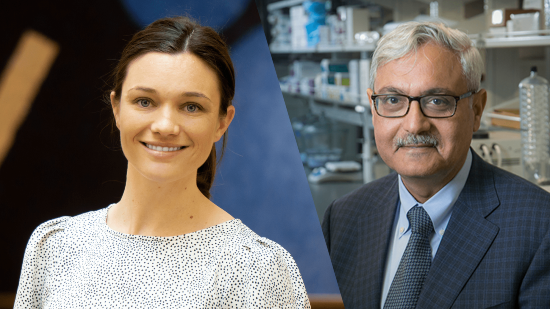
Startup Sets Out to Tackle the Gene Therapy Manufacturing Crisis
[Republished with permission from Endpoints News. The North Carolina Biotechnology Center helped bootstrap Isolere Bio with a $250,000 loan in 2019 and also provided a $3,000 Industrial Internship award in 2020. That opened the door to $7 million in follow-on funding, enabling Isolere to repay the Center’s loan and hire more people. Since 1996 NCBiotech has also provided 11 grants to help support the Duke University research of Ashutosh Chilkoti.]

After Kelli Luginbuhl finished her PhD, her advisor, Duke bioengineer and PhaseBio co-founder Ashutosh Chilkoti, sat her down and asked if she wanted to launch and then run a company. Chilkoti had a once-obscure technology he and the venture capitalist Joe McMahon thought could form the basis of his second company and finally pay huge dividends. Luginbuhl knew the tech from years in his lab and was already looking for biotech jobs. It all added up.
Three years, some strategizing, and 10 or so pitch meetings later, the trio is launching Isolere Bio, with $7 million in seed funding led by Northpond Ventures and technology they believe can allow gene therapy companies to vastly increase the number of doses they can produce. It’s one potential solution to a slow-boiling crisis that has become increasingly acute, as new companies struggle to get the materials they need for trials and some common diseases remain theoretically unfixable by gene therapy, because companies would never be able to make enough doses for that many patients.
The problem is partially that the facilities don’t yet exist to produce this much of gene therapy. Experts, however, also point to antiquated manufacturing processes.

“In gene therapy, manufacturing has a lot of inefficiencies to overcome, which our technology is uniquely positioned to address,” Luginbuhl, who serves as CEO, told Endpoints News.
Large pharma companies and CDMOs have known about the gene therapy manufacturing shortfall for a few years, spending billions to retrofit old drug-making facilities or build new ones to assure capacity for a future where hundreds of gene therapies are in clinical trials and dozens are on the market (currently only two are approved in the US, both for rare diseases). More recently, though, a small handful of startups have tried to not only build new factories but reinvent how gene therapies are made, turning a largely academic process into an industrial one. That includes the George Church spinout 64xBio and the monstrously backed Bob Nelsen startup Resilience.
Like Resilience and 64x, Isolere is trying to boost the production of AAV, the non-disease-causing virus that most gene therapy companies use to deliver healthy or functional replacement genes into patients. They’re doing so by changing one obscure process in the manufacturing chain: how AAV is filtered out of the huge bags of cells used to produce the virus.
AAVs are large, 20-sided particles, but currently manufacturers filter the viruses out with the same decades-old proceses they would use for much smaller molecules: chromatography columns, vertical tubes where you mix a solution from the cells with beads that bind to and prevent the AAV from passing through initially, while everything else flushes out. It’s highly inefficient, though, Luginbuhl said. Among other issues, the columns have low capacity. Between 70% and 80% of the solution is generally lost, Luginbuhl said.
Chilkoti’s lab is known for its work on biomaterials, the ones he put to use founding PhaseBio, hoping to build drugs that floated through the body differently and enabled more patient-friendly dosing regimens. The biomaterials Isolere is bringing forward bind to the AAV and form the same kind of liquid-liquid separation as you see in oil in water emulsions — like a protective bubble around AAV, separating it from the rest of the solution.
That material can shepherd the AAV through the filtration process, Luginbuhl said. The goal is to improve yields by 50%.
It’s “a huge pain point in AAV manufacturing that we’re positioned to address,” she said.
Luginbuhl said their technology can work on any AAV and added, relatively seamlessly, into existing manufacturing processes. So far, they’ve only tested it on 2 liter tanks, but she said they’ve been working with major gene therapy companies and hope to sign a co-development deal that would let them scale up the process.
The goal is to get to the market in 16 months. A Series A is in the works, she said, but of lesser concern. For now, they have the runway, she said, and the field is in dire need of new techniques.
“You hear that quote that we’re training children for jobs that don’t exist today,” she said. “The medicines of the future are modalities we may not even know exist today. And so it’s important to be ready to manufacture the next generation of medicines.”
“To do that we need new ideas and new innovations in manufacturing,” she added. “The downstream purification field had really remained quite stagnant.“
